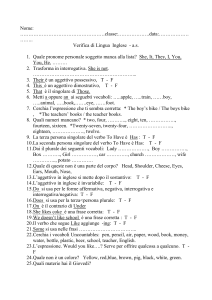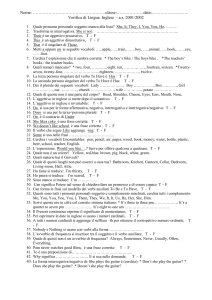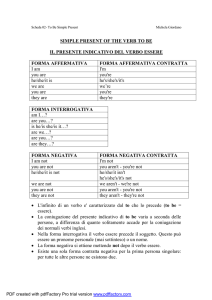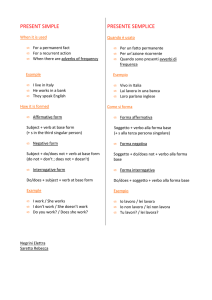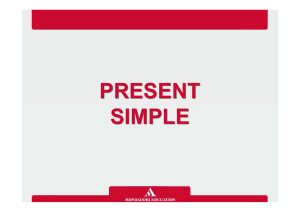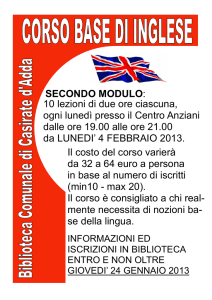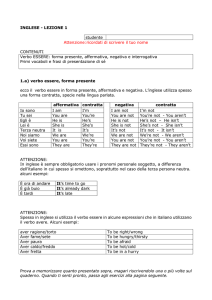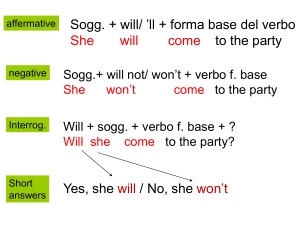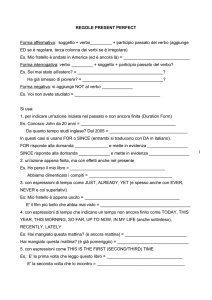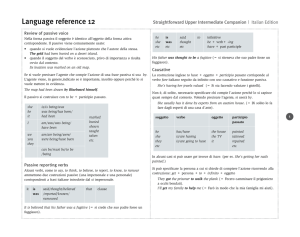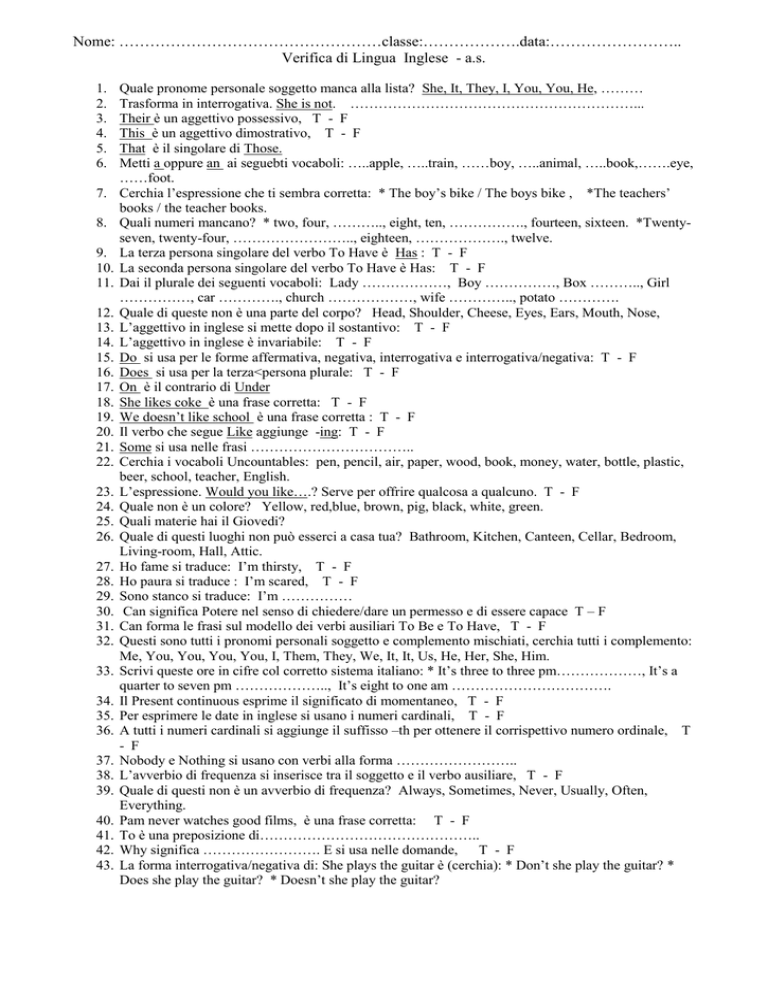
Nome: ……………………………………………classe:……………….data:……………………..
Verifica di Lingua Inglese - a.s.
1.
2.
3.
4.
5.
6.
7.
8.
9.
10.
11.
12.
13.
14.
15.
16.
17.
18.
19.
20.
21.
22.
23.
24.
25.
26.
27.
28.
29.
30.
31.
32.
33.
34.
35.
36.
37.
38.
39.
40.
41.
42.
43.
Quale pronome personale soggetto manca alla lista? She, It, They, I, You, You, He, ………
Trasforma in interrogativa. She is not. ……………………………………………………...
Their è un aggettivo possessivo, T - F
This è un aggettivo dimostrativo, T - F
That è il singolare di Those.
Metti a oppure an ai seguebti vocaboli: …..apple, …..train, ……boy, …..animal, …..book,…….eye,
……foot.
Cerchia l’espressione che ti sembra corretta: * The boy’s bike / The boys bike , *The teachers’
books / the teacher books.
Quali numeri mancano? * two, four, ……….., eight, ten, ……………., fourteen, sixteen. *Twentyseven, twenty-four, …………………….., eighteen, ………………., twelve.
La terza persona singolare del verbo To Have è Has : T - F
La seconda persona singolare del verbo To Have è Has: T - F
Dai il plurale dei seguenti vocaboli: Lady ………………, Boy ……………, Box ……….., Girl
……………, car …………., church ………………, wife ………….., potato ………….
Quale di queste non è una parte del corpo? Head, Shoulder, Cheese, Eyes, Ears, Mouth, Nose,
L’aggettivo in inglese si mette dopo il sostantivo: T - F
L’aggettivo in inglese è invariabile: T - F
Do si usa per le forme affermativa, negativa, interrogativa e interrogativa/negativa: T - F
Does si usa per la terza<persona plurale: T - F
On è il contrario di Under
She likes coke è una frase corretta: T - F
We doesn’t like school è una frase corretta : T - F
Il verbo che segue Like aggiunge -ing: T - F
Some si usa nelle frasi ……………………………..
Cerchia i vocaboli Uncountables: pen, pencil, air, paper, wood, book, money, water, bottle, plastic,
beer, school, teacher, English.
L’espressione. Would you like….? Serve per offrire qualcosa a qualcuno. T - F
Quale non è un colore? Yellow, red,blue, brown, pig, black, white, green.
Quali materie hai il Giovedi?
Quale di questi luoghi non può esserci a casa tua? Bathroom, Kitchen, Canteen, Cellar, Bedroom,
Living-room, Hall, Attic.
Ho fame si traduce: I’m thirsty, T - F
Ho paura si traduce : I’m scared, T - F
Sono stanco si traduce: I’m ……………
Can significa Potere nel senso di chiedere/dare un permesso e di essere capace T – F
Can forma le frasi sul modello dei verbi ausiliari To Be e To Have, T - F
Questi sono tutti i pronomi personali soggetto e complemento mischiati, cerchia tutti i complemento:
Me, You, You, You, You, I, Them, They, We, It, It, Us, He, Her, She, Him.
Scrivi queste ore in cifre col corretto sistema italiano: * It’s three to three pm………………, It’s a
quarter to seven pm ……………….., It’s eight to one am …………………………….
Il Present continuous esprime il significato di momentaneo, T - F
Per esprimere le date in inglese si usano i numeri cardinali, T - F
A tutti i numeri cardinali si aggiunge il suffisso –th per ottenere il corrispettivo numero ordinale, T
- F
Nobody e Nothing si usano con verbi alla forma ……………………..
L’avverbio di frequenza si inserisce tra il soggetto e il verbo ausiliare, T - F
Quale di questi non è un avverbio di frequenza? Always, Sometimes, Never, Usually, Often,
Everything.
Pam never watches good films, è una frase corretta: T - F
To è una preposizione di………………………………………..
Why significa ……………………. E si usa nelle domande, T - F
La forma interrogativa/negativa di: She plays the guitar è (cerchia): * Don’t she play the guitar? *
Does she play the guitar? * Doesn’t she play the guitar?

